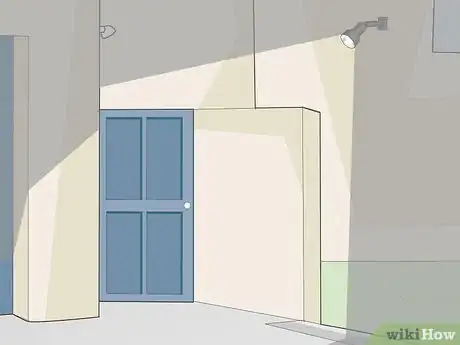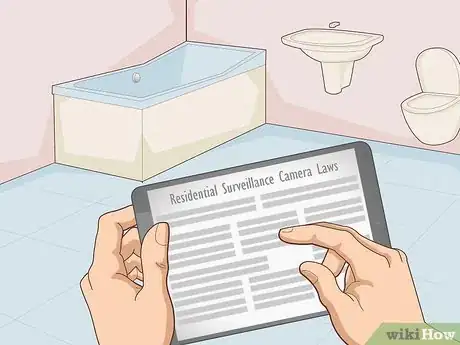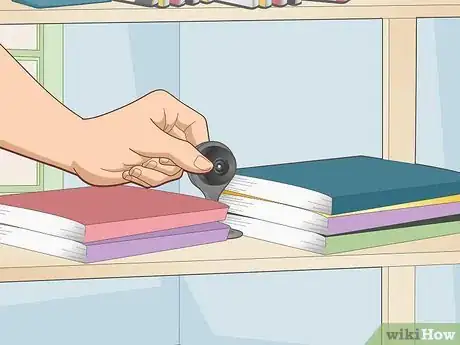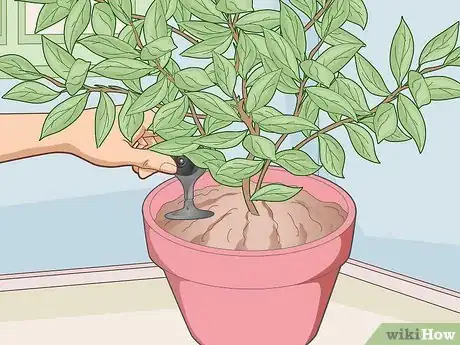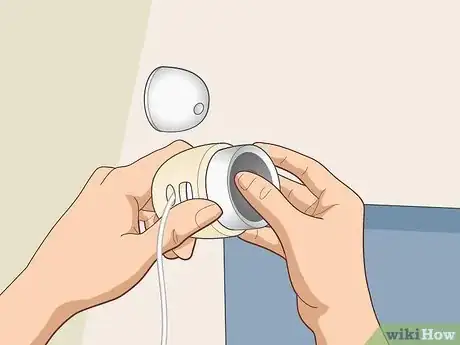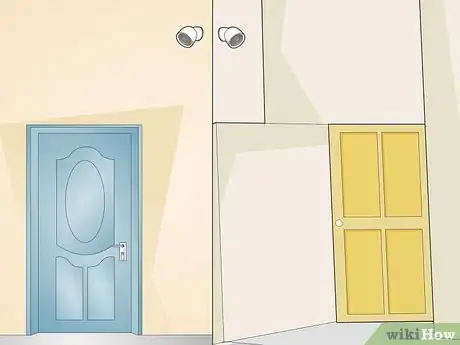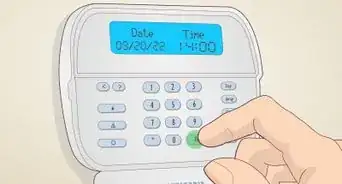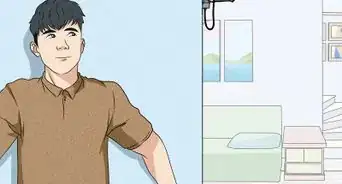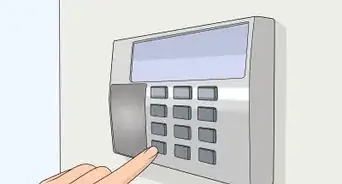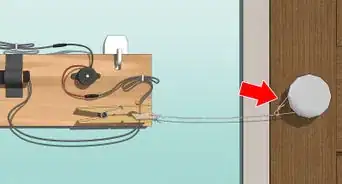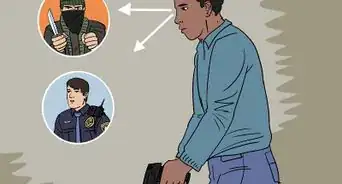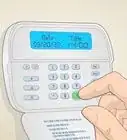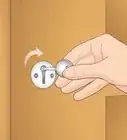This article was co-authored by Mitch Harris. Mitch Harris is a Consumer Technology Expert based in the San Francisco Bay Area. Mitch runs his own IT Consulting company called Mitch the Geek, helping individuals and businesses with home office technology, data security, remote support, and cybersecurity compliance. Mitch earned a BS in Psychology, English, and Physics and graduated Cum Laude from Northern Arizona University.
There are 7 references cited in this article, which can be found at the bottom of the page.
This article has been viewed 29,208 times.
Nest cameras are easily hidden security devices to keep you protected. Place them in an ideal hiding spot based on your vulnerable locations and obscured entrances. Choose 1 or more Nest cameras and hide them inside or outside, depending on your security needs. With Nest cameras, you will have the ability to record your home discreetly and keep your family safe.
Steps
Planning Your Camera Placement
-
1Identify your most vulnerable locations. Vulnerable locations are locations that could be easy targets for burglars or criminals, like dimly lit areas or infrequently traveled spaces. This could be your back porch or driveway, for example. You want to put your camera in strategic locations so you can stay safe and catch criminals.[1]
-
2Look for obscured entrances when considering your camera placement. Obscured areas are places around your home with limited visibility, such as windows or doors. Place your camera in these obscured spots so you can record from different perspectives.[2]
- Nest cameras provide you the ability to see discreetly, so place them where you can improve your sight.
- For example, perhaps a branch or tree is blocking half of your dining room window. You could place your camera on this branch to view from this perspective.
Advertisement -
3Test your lighting to ensure you can record clear footage in the dark. Place your camera in a location, record during the night time, and see how your footage looks. Can you clearly see everything in the picture? Are there blind spots? You can either reposition the camera or add another light source, depending on your location.[3]
- If your camera has night vision abilities, then its lighting should be adequate at all times of the day.
-
4Check security camera placement laws so you don’t invade privacy. It is legal to record videos indoors and outside, generally speaking, as long as you are within your home or filming in public. These laws vary from country to country, and even state to state, so research online before you record without consent.[4]
- In the United States, many states have laws against violating privacy when recording, like in bathrooms or personal bedrooms.
- There are different laws if your intent is based on distributing recordings, selling your videos, or using footage in court. Make sure to research this accordingly.
Hiding Your Camera Inside
-
1Use a tissue box to disguise your camera if you are on a budget. A tissue box is a common, inexpensive household item that can easily turn into a Nest camera hiding spot. Take out all of your tissues and place your camera inside the box. Cut a small hole for your camera’s lens in the cardboard, using an X-ACTO knife or scissors. Line your camera up with the hole, and replace the tissues.[5]
- To measure the hole, line up your camera so it is flush against the cardboard. You can either trace the lens or approximate the size.
- Remember to add a tissue coming out of the top!
-
2Mount your camera from a ceiling or window for a birds-eye view. Screw the plate into the wall, securing your Nest camera. You can do this on the ceiling, top of your walls, or right above your windows for a large range of view. Because your camera will be out of most people's line of sight, criminals can overlook cameras placed here.[6]
- You can also purchase a colored silicone Nest camera skin in the color of your wall or ceiling for extra camouflage.
-
3Stash your camera in a bookcase for an inconspicuous location. Place your Nest camera on a shelf or on top of a row of books, depending on your angle. Go for a spot you don’t touch very often. More often than not, intruders aren’t looking to steal your novels or puzzle books.[7]
-
4Position your camera inside a houseplant to keep an eye on your home. Place your camera inside bundles of branches or stems, camouflaging it inside of the most dense area. You can also use a small, flexible tripod mount and wrap that around a sturdy stem of your plant. Also arrange the leaves around the camera so it is blended into the plant but still able to record clearly.[8]
- When you place your camera, make sure the camera is covered but the lens is not obstructed.
- This is especially helpful for keeping an eye on possible intruders.
-
5Hide your camera in plain sight if you are a gadget-lover. Sometimes the best hiding places are where you’d least expect them. If your camera is surrounded by something that looks similar, then it will appear invisible. Your eye will focus on the familiar items, and the hidden one will blend into the background.[9]
- For example, you can place your camera on your desk and surround it with other technology, like a bluetooth speaker, a computer router, or a tablet.
Hiding Your Camera Outdoors
-
1Purchase colored camera skins to camouflage your camera outdoors. Many companies make Nest camera accessories to conceal its appearance. These are usually silicone skins that wrap around the outside of your camera.
- The skins come in a variety of colors, including camouflage, white, black, and brown, to blend into a variety of backgrounds.
-
2Hide your camera in trees or bushes for an easy, free hiding spot. Place your camera inside your bush or tree, securely perched on a branch so it doesn’t fall. You can cover some leaves around the camera so it’s even more discreet. You can also use a tripod mount and wrap it around a branch for a more secure hold.
- Place your camera in off-street trees and bushes, if you would like to record unobserved areas.
-
3Install cameras at your front and back doors to guard your entryways. Find a spot above your doors where your camera’s view will not be obstructed, and drill the mounting plate into your wall. Attach your camera to the mounting plate, and check to make sure you can see well both in daylight and nighttime.[10]
- You can put your Nest camera at both your front and back doors, or one or the other. Consider your vulnerable areas before you install your camera.
-
4Place security cameras at off-street windows for extra protection. Tuck these in corners so they go unnoticed at first glace. Common break-in locations include rear windows, so the burglar cannot be seen from the street. Drill the mounting plate above a window outside so you can record areas that otherwise may go unseen.[11]
- You can also hide your camera near your off-street garage or driveway, if you think intruders would go back there.
Community Q&A
-
QuestionI don't have a camera, what can I use?
 Community AnswerYou can use any other electronic device. If you have a tablet then you can use that. You can also use the camera on your phone. If you really have to or if you really like to take photos you should definitely invest in a camera. If you are a kid, then you should talk to your parents. Some devices only have a front camera. This isn't good unless you take selfies all the time. It is hard to use a front camera only. Definitely invest or ask to use or borrow somebody else's camera.
Community AnswerYou can use any other electronic device. If you have a tablet then you can use that. You can also use the camera on your phone. If you really have to or if you really like to take photos you should definitely invest in a camera. If you are a kid, then you should talk to your parents. Some devices only have a front camera. This isn't good unless you take selfies all the time. It is hard to use a front camera only. Definitely invest or ask to use or borrow somebody else's camera.
References
- ↑ Mitch Harris. Consumer Technology Expert. Expert Interview. 23 June 2021.
- ↑ Mitch Harris. Consumer Technology Expert. Expert Interview. 23 June 2021.
- ↑ https://reolink.com/where-to-place-home-security-cameras/
- ↑ http://employment.findlaw.com/workplace-privacy/are-hidden-cameras-at-work-legal-.html
- ↑ https://www.safewise.com/blog/6-creative-ways-to-hide-your-nest-cam/
- ↑ https://youtu.be/iVthvYb_Mys?t=1m55s
- ↑ https://www.safewise.com/blog/6-creative-ways-to-hide-your-nest-cam/
- ↑ https://ideaing.com/ideas/hide-nest-home-security-camera
- ↑ https://ideaing.com/ideas/hide-nest-home-security-camera



